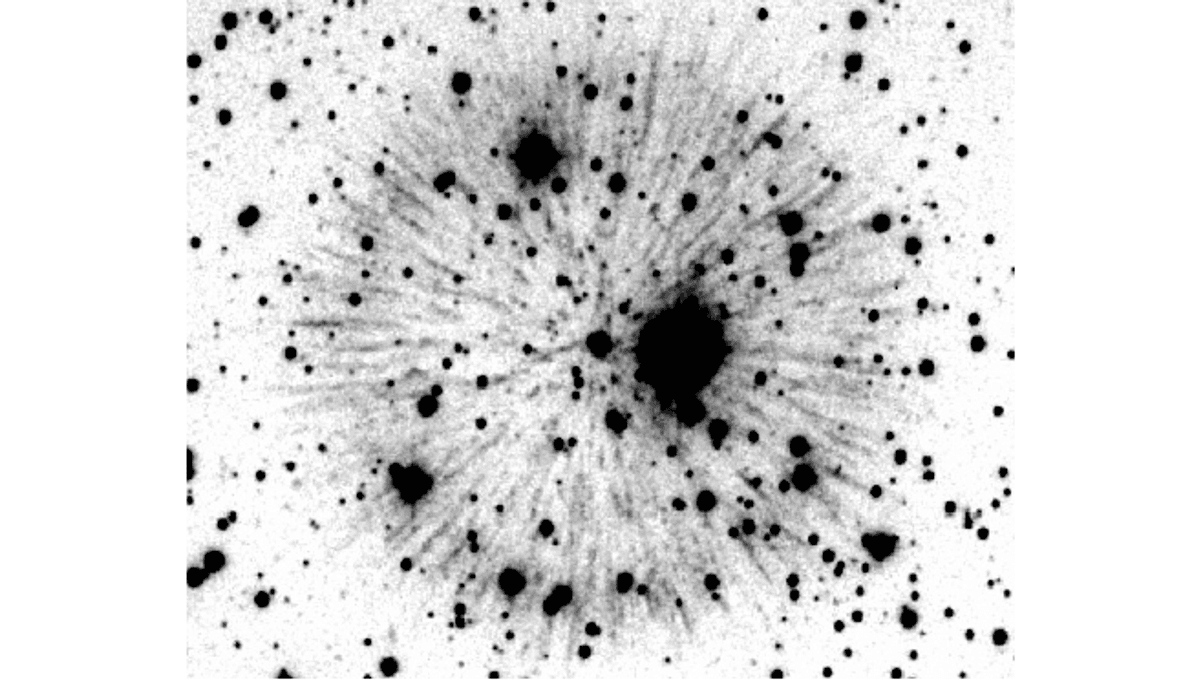
A poem of praise for the famous sultan Salah ad-Din Yusuf ibn Ayyub (Saladin) has been misdated, a new paper argues, and refers not to an unusually close planetary conjunction but to the supernova of 1181. If the claim is correct, the poem’s words could be of scientific value to astronomers hoping to establish how bright the event would have been from Earth, and how long it took to fade.
In 1181 and 1182, Chinese and Japanese astronomers reported a “guest” star appearing in the northern sky before fading away. Modern astronomers have puzzled over whether this was a nova or a supernova, and in the latter case, which type. Remarkably, it was only 12 years ago that amateur astronomer Dana Patchick discovered an unusually shaped supernova remnant in the constellation Cassiopeia, and eight years later, it was noticed to look to be about the right age and location.
However, the mystery has been deepened by the fact that the temporary star was not reported by astronomers in either Europe or the Middle East. At least, that’s what had been thought, but reanalysis of a poem written to exalt Saladin suggests the appearance was noted in Egypt, and probably throughout the Arab world.
An interdisciplinary team have interpreted the poem to offer hints about the event that might improve understanding in modern scientific terms, although it’s certainly open to question just how accurate poetic accounts can be assumed to be.
Absolute rulers are notoriously susceptible to flattery, and poets who know what’s good for them often lay it on to an extent that seems ridiculous to outsiders. When the monarch is one as successful as Saladin, who founded a dynasty, ruled an empire that stretched from Mesopotamia to Nubia and Yemen, pioneered hand grenades, and defeated the Third Crusade, the fawning can get truly over the top. Being a renowned patron of the arts helps as well.
Whether poet Ibn Sana’ al-Mulk really believed Saladin was “destined to rule the lights of the sky”, or if he just knew what would bring reward, he composed a poem in honour of Saladin, considered a classic of Arab literature. The poem makes a reference to a new star brought forth by Saladin’s achievements. Although the poem is 56 verses long, this was no mere passing reference, being a central theme of the first 16 verses, including the line, “…thanks to your justice, now even the stars in the sky have increased in number.”
The first editor of al-Mulk’s work thought the poem was from 1186 or later, and that the reference was to a conjunction of planets astrologers predicted would end the world in that year. Subsequent scholars of the poem have usually accepted this dating. An introduction likely added after al-Mulk’s death, referring to a “star with a tail”, added to the confusion.
However, J. G. Fischer of the Universität Münster and co-authors have noted hints in the poem that it was written for one of Saladin’s returns to Egypt, most likely in 1181-82. The timing alone represents a weak link to the supernova of 1181, but the poem refers to the star as a signet ring on “The Dyed Hand”. Where the Ancient Greeks saw the five bright stars of Cassiopeia representing a woman, Arab astronomers and astrologers saw the fingers of a hand dyed with henna.
Fischer and co-authors argue that the poem’s references to the hand having “adorned itself with the star” and “[the] sky’s hand boast of its star”, indicate that the novelty was brighter than any of the ordinary members of Cassiopeia. If so, the supernova must have peaked at an apparent brightness greater than α Cas, or 2.25 magnitudes. However, since γ Cas is a variable star that is often brighter than α Cas, the bar might be higher still.
Japanese astronomers described the event at the same time as being similar in brightness to Saturn, which is two to four times as bright as α Cas.
The paper contrasts this with a newly identified Egyptian account of the supernova of 1006, which is compared to the Moon in brightness.
The remnants of the supernovae of 1006 and 1181 indicate that both were “double-degenerate” Type 1a supernovae, that is, they were caused by the merging of two white dwarfs. Type Ia supernovae are used to measure the expansion of the universe.
Although most Type Ia supernovae are usually thought to involve a white dwarf capturing material from a main-sequence star (single degenerate), some astronomers now think double degenerates make up a larger portion than previously recognized. Having two double-degenerate supernovae among the last five examples visible within the Milky Way provides some support for this idea, and makes any information that can be squeezed from ancient accounts of these events particularly valuable.
So far, the information provided in the poem confirms, rather than expands on, the Chinese and Japanese accounts of the event, but more may be to come. Meanwhile, as is famously the case for the much brighter supernova of 1054, it seems European chroniclers of the time preferred to ignore what they could not understand.
The paper is open access in Astronomical Notes.
[H/T: Earthsky]
Source Link: Ancient Poetry Praising Famous Sultan Saladin Linked To Recently Rediscovered Supernova Of 1181